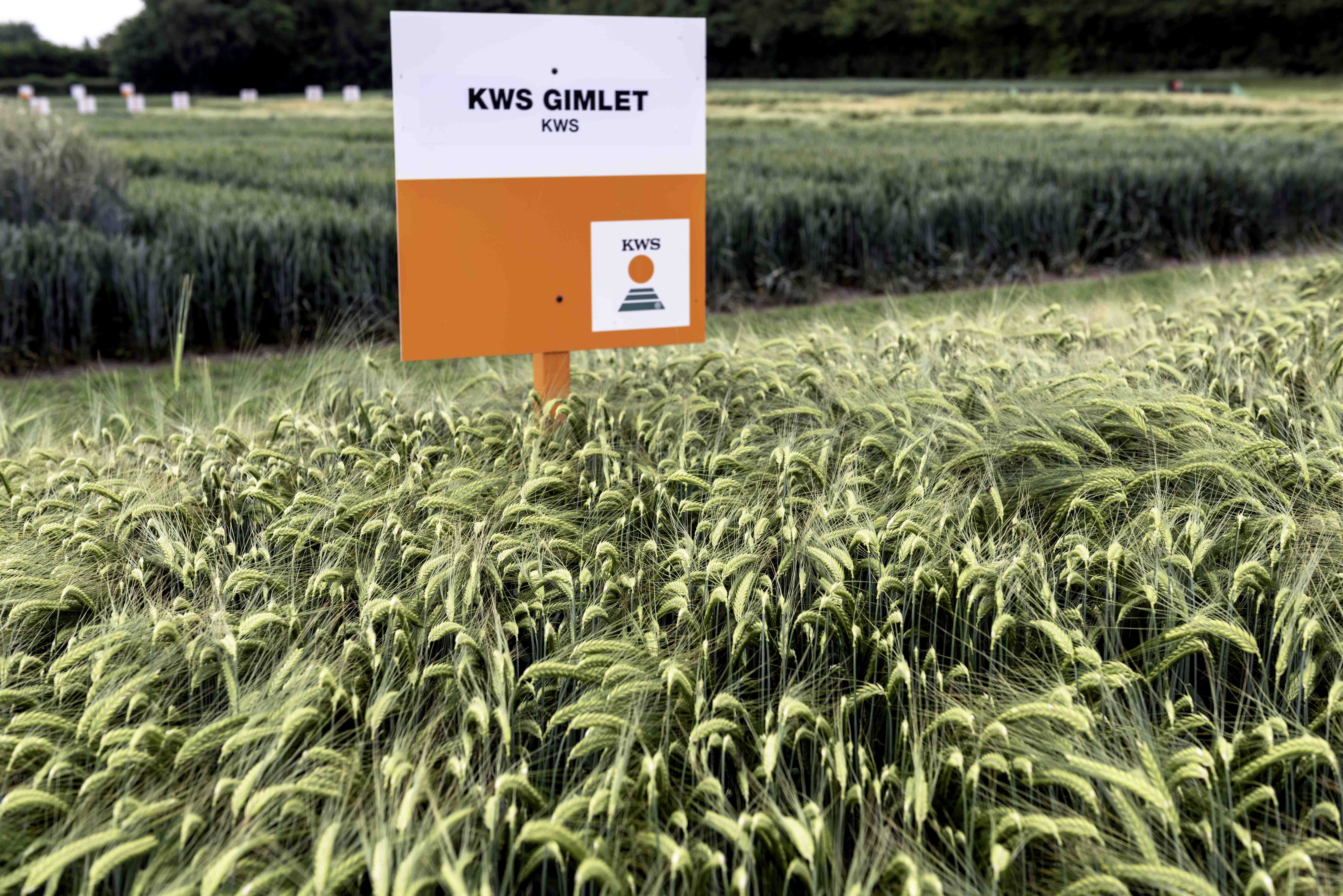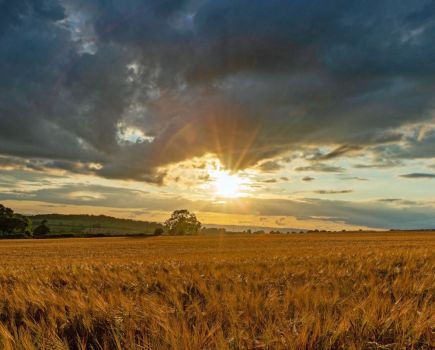For all its appeal and rotational benefits, the area of winter barley across England has remained steady at around 350,000 hectares since the Fischler Reforms of 2003 broke the link between farm incomes and production. This is a far cry from the 912,700 hectares sown in 1985 when subsidised prices incentivised growers to go for maximum output.
By Ted Fleetwood
No longer constrained by coupled payments and free to respond to the market, the Fischler reforms meant growers could grow what would give them the greatest financial return. For most, this was winter wheat with oilseed rape becoming the preferred break option. It was an understandable response given the gross margin returns of these two crops. At the time the performance of both was helped by a range of fungicides and herbicides that were highly effective and reasonably inexpensive compared with today’s comparatively limited and, in some instances, ineffective, selection.

Given nitrogen fertiliser like that of winter wheat, winter barley often out-yields wheat in the second cereal position
More than decade later and the situation is changing. There is an increasing recognition, says Will Compson, KWS cereal and sales manager, that for wheat to do well, it needs a successful rotation.
“For most growers, winter wheat is the foundation of both their rotation and of their farm’s financial performance. This is perhaps understandable given the yield potential of modern varieties and the impressive gross margins many achieve as a result, but it needs a firm foundation to truly perform. Tight rotations limit this opportunity and we are seeing more interest in winter barley as a result,” he says.
While oilseed rape still holds a place in most rotations, it often occupies less space than it once did. Herbicide withdrawals and resistance to some of the more effective active substances have meant it is no longer the ‘cleaning crop’ it once was while the loss of neonicotinoid seed treatments means crops are more vulnerable to attack from flea beetle and it larvae.
“It’s part of a wider desire to limit risk. Growers want more cropping diversity in the rotation, while spreading the workload to enable more precise timing of inputs. This presents the question: what to grow instead?” says Will Compson.

New for autumn 2018 is KWS Gimlet, a two-row feed, although both KWS Orwell and KWS Cassia are expected to remain popular based on consistent performance.
“Winter barley has a lot to offer and where managed well it can perform as well, if not better, than a second wheat,” he adds.
To support growers in identifying the winter barley variety that best suits their farm situation, KWS has created data sheets for each of its two-row and six-row varieties that outline the key features of each. Visit the winter barley section of the KWS website for more where you will also be able to download a copy of the winter barley management guide
Reasons to consider winter barley
- It is often the first crop to be harvested helping to spread the summer workload and make way for cultivations: for many there is no better entry for oilseed rape;
- Given the same fertiliser regime as wheat (170-220 kg N/ha) it delivers similar yields and often does better in the second cereal situation;
- It is cheaper to grow than wheat: rarely needing a T3 fungicide the variable costs are roughly 75% of wheat;
- Fungicide timings are typically a week earlier than wheat helping to spread the sprayer workload and reduce the pressure on wheat application timings;
- Barley straw has a higher sale value than wheat. At about £65/t baled ex-field this is roughly equivalent to an extra £180/ha.
- Investment in breeding is bringing better disease and virus resistance: in autumn 2018 KWS will release a limited quantity of a BYDV tolerant six-row winter barley. This will reduce the potential for virus to impact crop performance.
- Investment in breeding is also delivering varieties with better yield potential: the leading two-row varieties offer yields comparable with that achieved by the best six-rows.
KWS Orwell
Growers in search of a high-yielding winter barley with excellent straw strength should consider KWS Orwell.
As the highest yielding two-row feed on the 2018-19 RL, its strong agronomic credentials and impressive disease resistance make it the obvious choice for those looking for a new variety with exciting potential.
Its medium height, stiff straw and consistent grain yields make KWS Orwell well-suited to those with mixed farms or with more fertile soils.
Disease resistance is generally sound with no weakness to the two most common wet weather diseases, net blotch and Rhynchosporium. If there is a disease concern though most growers manage to control this without difficulty.
Its brown rust too is respectable and better than many of the varieties on the 2018-19 Recommended List.
KWS Orwell has similar maturity to KWS Cassia, but earlier ear emergence which partly explains its higher yield potential.
Although it has the maturity date of KWS Cassia, ear emergence is about two days earlier in comparison. This gives it an increased grain fill period and a yield improvement across the country of about 5%, without any delay in harvest.
It is by far the stiffest strawed winter barley on the RL and produces grain with good specific weight. It is on course to become the most widely sown winter barley in the UK in the next few years.
KWS Gimlet
The leading AHDB-Candidate variety in 2018-19 official trials, KWS Gimlet is scheduled for addition to the AHDB Recommended List in the autumn of 2018.
A two-row feed variety with Barley Yellow Mosaic Virus (BYMV) resistance, KWS Gimlet is unlike other two-row varieties from KWS.
KWS Gimlet is high-yielding feed type with a range of appealing characteristics that will make management easy and support its appeal on farm. A treated yield of 107% of controls and the joint highest untreated yield thanks to its robust all-round disease resistance, suggest KWS Gimlet will find favour with growers across the UK.
A three-way cross between KWS Glacier and California x Matros, KWS Gimlet is taller than its parents at about 97cm, while being earlier to mature than KWS Glacier and is higher yielding than KWS Orwell.
For the past five years, KWS Orwell has been the benchmark variety by which KWS has measured its candidates as has shown excellent yield consistency across a range of seasons. KWS Gimlet has constantly yielded 1-2% higher than KWS Orwell in KWS trials during this time.
It has five to six more grain sites per ear than other KWS two-row varieties and demonstrates a faster growth habit that marks it out as being distinct from other two-row types.
Its consistent performance owes much to its combination of favourable characteristics including all-round disease resistance and high grain sites per ear combined with its favourable specific weight.
KWS Cassia
KWS Cassia has been the benchmark variety for winter barley growers since its introduction in 2010 and is a widely considered to be greater than the sum of its parts.
A good average yield – a reliable 99% of controls in all regions of the United Kingdom – with a bold grain and the highest specific weight of any winter barley on the AHDB Recommended List, it has low screenings, good straw strength and an untreated yield that is better than its average disease scores suggest.
At 90 cm it is of average height while its average maturity will appeal to those wanting to prepare ground in good time for oilseed rape.




